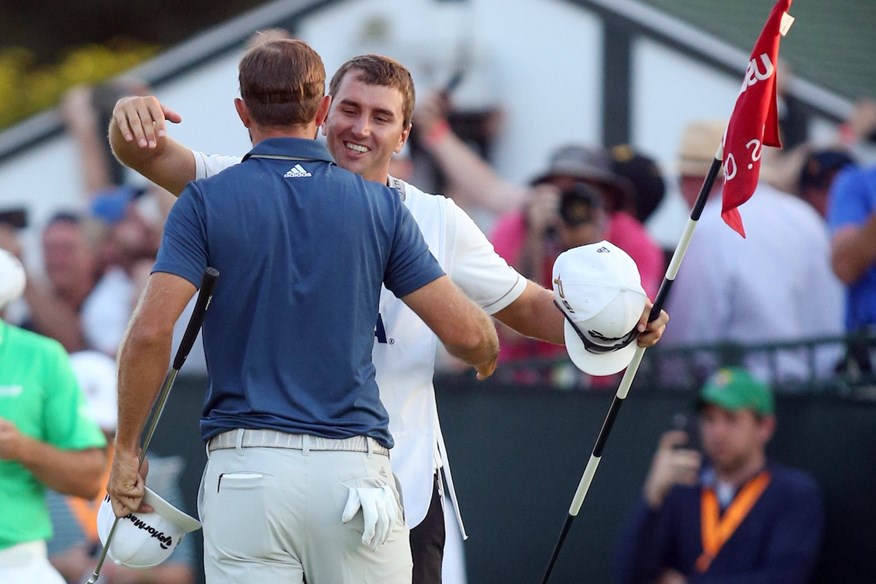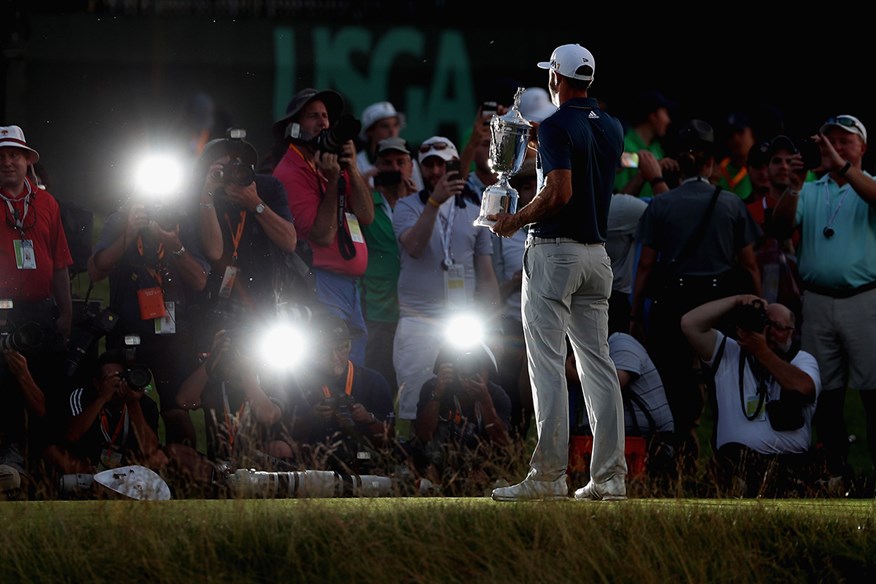How a Dustin Johnson incident at the US Open sparked a complete rewrite of the Rules of Golf
Last updated:

You’re almost certainly going to hear a lot about what happened to Dustin Johnson the last time the US Open was at Oakmont in 2016. Well, here’s the story…
Dustin Johnson assessed his par putt at Oakmont’s short fifth hole before taking two practice swings and addressing his ball. But before the head of his TaylorMade Spider could touch the surface, he pulled it away. Something was bothering him. Then his ball moved.
Not by much. But it moved.
Trailing leader Shane Lowry – who was back on the fairway playing in the final group alongside Andrew Landry – by two, Johnson was in no position to take risks. He immediately called for referee Mark Newell and told him he had not caused it to move. His playing partner, Lee Westwood, backed him up and Newell told him to play on without penalty.
At the start of that year, the rule had changed to say that, instead of an automatic penalty for your ball moving, you would only be punished should officials determine you were “more likely than not” the cause.
So while Johnson played on, somewhere in a tent near Oakmont’s clubhouse, the USGA’s Craig Winter was reviewing the video footage. Winter told Thomas Pagel, the body’s chief governance officer, that he believed there was a violation of what was then Rule 18.2. Pagel, as well as a number of other officials, agreed.
Then they made a decision that rocked the golf world.
They headed out to the course to tell Johnson what was happening.
The officials reached him on the 12th tee – by which point Johnson had taken a one-shot lead over a struggling Lowry.
It meant that not only might that lead be wiped out at any moment by an impending punishment that could undo all his hard work, the American now had to play the final seven holes of the US Open not knowing what was going on behind the scenes. Given his previous record with the Rules of Golf at majors – notably the 2010 PGA Championship when he was hit with a two-shot penalty that cost him a place in the playoff after grounding his club in what he thought was a waste area – you would have forgiven him for collapsing.
“It’s out of our control,” Johnson’s brother and caddie, Austin, told him. “Let’s keep playing solid golf and everything will take care of itself.”

Johnson, to his eternal credit, managed to compose himself and finish the remaining holes in level par to finish at 5-under, three clear of Lowry, who ended up in a tie for 2nd alongside Jim Furyk and Scott Piercy.
Only when Johnson came in to sign his card did the USGA confirm he would be penalized to the tune of one stroke. His 68 became a 69 and fans, players, and even the higher-ups of the governing body were up in arms.
Mike Davis, then the USGA’s executive director, called it a “god-forsaken rule”, while the players took to social media to vent their frustration.
Jordan Spieth, who 12 months prior had been the beneficiary of Johnson three-putting the 72nd hole at Chambers Bay to win his second major title, wrote: “Lemme get this straight. DJ doesn’t address it. It’s ruled that he didn’t cause it to move. Now you tell him he may have? Now? This a joke?”
Rory McIlroy was also thumbing angrily into his phone: “This is ridiculous. No penalty whatsoever for DJ. Let the guy play without this crap in his head. Amateur hour from the USGA.”
An hour later, he added: This isn’t right for anyone on that golf course. If it was me, I wouldn’t hit another shot until this farce was rectified.”
Rickie Fowler also weighed in: “The fact the USGA thinks DJ caused the ball to move is completely ridiculous! Laughable!”
The USGA’s statement immediately after the incident was as apologetic as it was explanatory.
“The USGA wishes to congratulate Dustin Johnson on his victory and thank him, and the other players in the field, for their professionalism and grace throughout the championship. Dustin is a wonderful champion, a talented golfer and a gentleman,” it read.
“Our team at the USGA has seen and heard a great deal of discussion and debate about the ruling on Dustin’s ball moving during the final round of the 2016 U.S. Open Championship at Oakmont Country Club. In addition to the explanations we offered upon the conclusion of the final round, we add these comments.
“Upon reflection, we regret the distraction caused by our decision to wait until the end of the round to decide on the ruling. It is normal for rulings based on video evidence to await the end of a round, when the matter can be discussed with the player before the score card is returned. While our focus on getting the ruling correct was appropriate, we created uncertainty about where players stood on the leader board after we informed Dustin on the 12th tee that his actions on the fifth green might lead to a penalty. This created unnecessary ambiguity for Dustin and the other players, as well as spectators on-site, and those watching and listening on television and digital channels.”

Ultimately, it didn’t matter. Johnson still won his maiden major by three shots, and went on to add a Masters to his resume four years later.
Afterwards, he admitted that it was the assumption he had done nothing wrong that saved him.
He explained: “I just told myself, ‘We’ll worry about it when we get done.’ I didn’t think I was going to be penalized. They said they were going to review. There was nothing I could do about it [but] just focus on this next shot. I tried to do that from there all the way to the house. It was just me and the golf course.”
But you can’t help but wonder if the USGA would have taken the same course of action had Johnson walked off the 18th with just a one-shot lead. Ultimately, it’s all history now.
(As a fun footnote, if you’re wondering how Johnson feels about it nine years later, when he was asked ahead of this year’s tournament how he managed to shoot 4-under round on such a difficult layout last time out, his immediate response was to laugh and say “5-under”.)
So what happened next?
A few weeks later, ahead of the Open Championship at Royal Troon, Davis defended the incident.
“No one will ever know if Dustin caused the ball to move, but anyone who thinks the rule wasn’t applied correctly doesn’t know the rules,” he explained.
“If we had not applied that penalty, we could never have lived with ourselves. But the issue is with the rule itself. It forces an official into the most difficult situation – adjudicating the weight of evidence. We will learn from it, and golf will learn from it.
“One of our major goals is to modernize and simplify the rules, not just for tournament play, for everyday play. And the game will benefit in the long run.”

So the USGA, along with the R&A, set about overhauling the rulebook.
“Nothing was sacred,” John Bodenhamer, the USGA’s then managing director for rules, competitions and equipment standards, explained. “Everything was on the table.”
And, on January 1, 2019, the largest revision of the Rules of Golf in more than a century was announced.
As for what we’ll call “DJ’s Rule” – well, that’s now 13.1(d), which reads:
When Your Ball or Ball-Marker Moves on Putting Green
There is no penalty if you, your opponent or another player in stroke play accidentally move your ball or ball-marker on the putting green.
You must replace your ball on its original spot (which if not known must be estimated) or place a ball-marker to mark that original spot.
Exception – Your Ball Must Be Played as It Lies When It Begins to Move During Your Backswing or Stroke and the Stroke Is Made.
If natural forces cause your ball on the putting green to move, where you must play from next depends on whether your ball had already been lifted and replaced on its original spot:
- Ball already lifted and replaced – Your ball must be replaced on its original spot (which if not known must be estimated).
- Ball not already lifted and replaced – The ball must be played from its new spot.
Don't want to get caught out during a round? This is a must for all club golfers!


